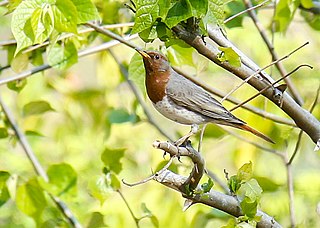
Berlin is the capital and largest city of Germany by both area and population. Its 3.7 million inhabitants make it the European Union's most populous city, according to population within city limits. One of Germany's sixteen constituent states, Berlin is surrounded by the State of Brandenburg and contiguous with Potsdam, Brandenburg's capital. Berlin's urban area, which has a population of around 4.5 million, is the second most populous urban area in Germany after the Ruhr. The Berlin-Brandenburg capital region has around 6.2 million inhabitants and is Germany's third-largest metropolitan region after the Rhine-Ruhr and Rhine-Main regions.

Germany, officially the Federal Republic of Germany, is a country in Central Europe. It is the second most populous country in Europe after Russia, and the most populous member state of the European Union. Germany is situated between the Baltic and North seas to the north, and the Alps to the south; it covers an area of 357,022 square kilometres (137,847 sq mi), with a population of almost 84 million within its 16 constituent states. Germany borders Denmark to the north, Poland and the Czech Republic to the east, Austria and Switzerland to the south, and France, Luxembourg, Belgium, and the Netherlands to the west. The nation's capital and most populous city is Berlin and its financial centre is Frankfurt; the largest urban area is the Ruhr.

The red-breasted goose is a brightly marked species of goose in the genus Branta from Eurasia. It is currently classified as vulnerable by the IUCN.

The little grebe, also known as dabchick, is a member of the grebe family of water birds. The genus name is from Ancient Greek takhus "fast" and bapto "to sink under". The specific ruficollis is from Latin rufus "red" and Modern Latin -collis, "-necked", itself derived from Latin collum "neck".

The brown-necked raven is a larger bird than the carrion crow though not as large as the common raven. It has similar proportions to the common raven but the bill is not so large or deep and the wings tend to be a little more pointed in profile. The head and throat are a distinct brownish-black giving the bird its English name, while the rest of the plumage is black glossed with purple, blue or purplish-blue. Like the common raven, thick-billed raven and white-necked raven, it is one of the larger raven species. The feathers of this species often fade quite quickly to a brownish black and the bird can look distinctly brown by the time it moults. The feet, legs and bill are black. The dwarf raven was formerly considered a subspecies but this bird now appears to be closer to the pied crow than this species.

The red-necked stint is a small migratory wader. The genus name is from Ancient Greek kalidris or skalidris, a term used by Aristotle for some grey-coloured waterside birds. The specific ruficollis is from Latin rufus, "red" and collum, "neck".

The red-necked nightjar is the largest of the nightjars occurring in Europe. It breeds in Iberia and North Africa, and winters in tropical West Africa.

The Haliplidae are a family of water beetles that swim using an alternating motion of the legs. They are therefore clumsy in water, and prefer to get around by crawling. The family consists of about 200 species in 5 genera, distributed wherever there is freshwater habitat; it is the only extant member of superfamily Haliploidea. They are also known as crawling water beetles or haliplids.

The Limestone Coast is a name used since the early twenty-first century for a South Australian government region located in the south east of South Australia which immediately adjoins the continental coastline and the Victorian border. The name is also used for a tourist region and a wine zone both located in the same part of South Australia.

The southern rough-winged swallow is a small swallow. It was first formally described as Hirundo ruficollis by French ornithologist Louis Vieillot in 1817 in his Nouveau Dictionnaire d'Histoire Naturelle.

The dama gazelle, also known as the addra gazelle or mhorr gazelle, is a species of gazelle. It lives in Africa, in the Sahara desert and the Sahel. A critically endangered species, it has disappeared from most of its former range due to overhunting and habitat loss, and natural populations only remain in Chad, Mali, and Niger. Its habitat includes grassland, shrubland, semi-deserts, open savanna and mountain plateaus. Its diet includes grasses, leaves, shoots, and fruit.

The madanga or rufous-throated white-eye is a species of bird that was formerly included in the family Zosteropidae but is now thought to be an atypical member of the family Motacillidae, consisting of the pipits and wagtails. Its close relatives are tree pipits of the genus Anthus, and is endemic to the moist, mountainous, subtropical and tropical forest of the Indonesian island Buru. The bird was initially described from four specimens collected in April 1922 from one area in the western part of the island, near the settlement Wa Fehat, at elevations between 820 m (2,690 ft) and 1,500 m (4,900 ft). These observations were reproduced on two birds in December 1995 at Wakeika, at an elevation of 1,460 m (4,790 ft); changes in the bird's habitat at Wa Fehat were also noted in 1995. The bird was observed only in a few localities and neither its habitat area nor population is reliably known. The population is estimated at more than several hundred individuals, and the habitat at several hundred km2 from the available area above 1,200 m (872 km²) and above 1,500 m (382 km²); the birds are believed to disperse over their habitat rather than form groups. Because the species is restricted to a single island and its habitat is threatened by logging and other human activities, it is listed as endangered by the IUCN since 1996.

The red-throated thrush is a passerine bird in the thrush family. It is sometimes regarded as one subspecies of a polytypic species, "dark-throated thrush", black-throated thrush then being the other subspecies. More recent treatments regard the two as separate species. The scientific name comes from Latin. Turdus is "thrush" and the specific ruficollis is derived from rufus', "red", and collum, "neck".

Haliplus is a genus of crawling water beetles in the family Haliplidae. There are at least 180 described species in Haliplus. They are found worldwide, except for Antarctica, living among algae and aquatic vegetation at edges of ponds, lakes, and streams. They range in size from 1.75 to 5 mm.

The black-throated thrush is a passerine bird in the thrush family. It is sometimes regarded as one subspecies of a polytypic species, "dark-throated thrush", red-throated thrush then being the other subspecies. More recent treatments regard the two as separate species.
Haliplus crassus is a species of beetle in the Haliplidae family that can be found in Brazil, Panama, Paraguay, and Venezuela. It flies from May to October. Adults are as long as 3.7–4.2 millimetres (0.15–0.17 in) while its larvae is 2.1–2.5 millimetres (0.083–0.098 in) long.
Haliplus sibiricus is a species of water beetle from Haliplidae family that can be found in Finland, Norway, Sweden, Latvia, and northern Russia.
Haliplus apicalis is a species of water beetle in the genus Haliplus. It can be found on British Isles and in North-West Europe.
Haliplus furcatus is a species of water beetle from Haliplidae, family that can be found in Central Europe and Northwestern Europe.















